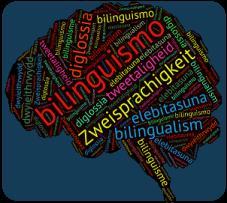Pliatsikas, C., Meteyard, L., Veríssimo, J., DeLuca, V., Shattuck, K., & Ullman, MT. (2020): The effect of bilingualism on brain development from early childhood to young adulthood
To access. click here
Abstract
Bilingualism affects the structure of the brain in adults. This is indicated by experience-dependent gray and white matter changes in brain structures implicated in language learning, processing, or control. However, limited evidence exists on how bilingualism may influence brain development. We examined the developmental trajectories of both grey and white matter structures in a cross-sectional study of a large sample (N=711 for grey matter, N=637 for white matter) of bilingual and monolingual participants, aged 3-21 years. Metrics of grey matter (thickness, volume, surface area) and white matter (fractional anisotropy, mean diffusivity) were examined across 41 cortical and subcortical brain structures and 20 tracts, respectively. We used generalised additive modelling to analyse whether, how, and where the developmental trajectories of bilinguals and monolinguals might differ. Bilingual and monolingual participants manifested distinct developmental trajectories in both gray and white matter structures. As compared to monolinguals, bilinguals showed: a) more gray matter (less developmental loss) starting during late childhood and adolescence, mainly in frontal and parietal regions (particularly in inferior frontal gyrus pars opercularis, superior frontal cortex, inferior and superior parietal cortex, and the precuneus); and b) higher white matter integrity (greater developmental increase) starting during mid-late adolescence, specifically in striatal-inferior frontal fibers. The data suggest that there may be a developmental basis to the well-documented structural differences in the brain between bilingual and monolingual adults.

